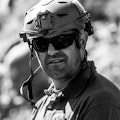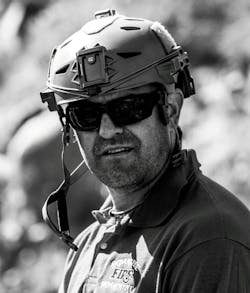Key Highlights
- To enhance the efficiency and effectiveness of emergency responses, focusing on increasing capabilities, expediting threat mitigation and improving casualty outcomes, a successful Active Shooter/Hostile Event Response (ASHER) should entail rapid threat neutralization by police and swift casualty evacuation by fire departments.
- The AASE (access/assess/stabilize/extract) framework is a tactical blueprint for improving response timelines and outcomes.
- Fire departments must abandon the notion that the Rescue Task Force concept is a one-size-fits-all solution for ASHER incidents. Tactics must evolve. Rapid deployment, effective intelligence-sharing and command support allow rescuers to execute meaningful interventions.
The Rescue Task Force (RTF) concept emerged in the aftermath of the Columbine massacre. Since then, it was adopted nationally and politicized at the highest levels of oversight. In theory, Active Shooter/Hostile Event Response (ASHER) incidents should be well-mitigated threats, with police and fire departments adequately trained to respond. However, data suggest otherwise: Chaos and confusion often slow response efforts, hinder casualty rescue and compromise operational safety. Even “success stories” often lack evidence of timely or effective RTF utilization, rendering any benefit to viable victims negligible.
To enhance the efficiency and effectiveness of emergency responses, focusing on increasing capabilities, expediting threat mitigation and improving casualty outcomes, a successful ASHER should entail rapid threat neutralization by police and swift casualty evacuation by fire departments. To achieve this, the principle of rescue must be reinstated as the core focus of the RTF model. The AASE (access/assess/stabilize/extract) framework is a tactical blueprint for improving response timelines and outcomes.
Rethinking the response
To develop a comprehensive response model, we must examine ASHER incidents from initiation through resolution. By analyzing documented failures and compiling data that support operational change, we can initiate a paradigm shift that elevates our collective performance as rescuers. A refined response timetable allows for better casualty management and more lives saved.
Although the RTF concept isn’t new, many departments focus training on theoretical or compliance-based implementations. National standards offer a starting point, but progression has stagnated. Notably, there are few reports of genuinely successful RTF deployments. Flexibility and strategic integration of complementary tactics can improve outcomes amid chaos. It’s critical to understand that RTF is a tactic, not a standalone strategy. The strategy remains to get in quicker, do better medicine and extricate to a higher level of care. Its proper application must support a broader objective: Stop the Dying. Misinterpretation of this principle leads to poor training and substandard response guidelines, even as departments attempt to comply with NFPA 3000: Standard for an Active Shooter/Hostile Event Response (ASHER) Program.
The AASE framework, which is built on field-tested and evidence-based practices, emphasizes flexibility and adaptability. Overly rigid protocols can hinder effective decision-making. Drawing on high reliability organization (HRO) theory, we understand that ASHER incidents are nonlinear, rapidly evolving events that require situational awareness and empowered critical thinking. Rescuers must respond to the conditions at hand, not force the situation to conform to policy.
Tactical pillars of rescue
Access. Police patrol officers typically arrive first (within 1–2 minutes) to an ASHER incident. To fulfill their mission—neutralizing the threat—they must gain access efficiently. This necessitates breaching tools, such as Halligans and flathead axes, and robust interagency training.
Establishing unified command early is vital, as is implementing a “lobby control” system. Quick access to Knox Box keys, key fobs and site-specific data prevents critical delays that are caused by lockdown procedures.
Approximately 70 percent of ASHER incidents occur in commercial or educational settings, where run-hide-fight protocols lead to locked and barricaded doors. Coordination with fire departments enables better access and swifter intervention.
Once law enforcement transitions from Stop the Killing to Stop the Dying, fire and EMS teams must operate in the warm zone. Departments should train for multidisciplinary interventions, adopting a rapid intervention crew (RIC) mindset. Ladders, breaching and ropes become valuable rescue tools. The goal is seamless, cooperative access and threat mitigation.
Assess. Upon gaining access, the RTF immediately must assess and stabilize victims while simultaneously planning extrication. This isn’t just a mass-casualty medical event; it’s an evolving tactical problem. Constant scene and patient assessment is key.
Assigning “quarterback” roles to a police sergeant and fire captain who work together enhances situational awareness and operational cohesion. These leaders maintain constant communication, manage their respective team and relay intelligence to unified command. Law enforcement controls movement and tactics, while fire manages patient care and extraction.
Scene conditions can shift quickly. The warm zone can revert to a hot zone in seconds. Tactical Emergency Casualty Care (TECC) tools, such as the MARCH algorithm, should guide patient treatment and triage. Utilize casualty collection points (CCPs) to organize patient flow and response efforts.
Stabilize. Stabilization involves both victims and the operational scene. Immediate lifesaving interventions that follow TECC guidelines should be prioritized. At the same time, unified command must control the influx of personnel and equipment.
RTF teams often run out of medical supplies early. Preplanned tactics, such as deploying supply caches from patrol cars or staging areas, can offset this. Utilize law enforcement to drop bags along the route and prepare fire crews to distribute gear to CCPs.
RTF is one tactic among several. Others, such as safety corridors, hall bosses, quick-connect protocols and traditional RTF structures, might be appropriate based on the scenario. Scenario-based tabletop exercises (e.g., single shooter in closed/open boxes, IED scenarios, vehicle attacks) help to prepare personnel for real-world complexity.
Understanding the boundaries between hot and warm zones and how to shift them dynamically is critical for safe and effective operations.
Extraction. Once the scene is reasonably stable, extraction begins under warm zone conditions. The hot zone should be minimized or eliminated, but residual threats—secondary devices, unclear shooter reports, etc.—remain.
At this stage, cross-training and role fluency become critical. Victims should be at CCPs or prepared for extraction. Fire departments excel in patient movement, breaching and vertical operations. This is their time to shine.
Use thermal imaging, VES (vent enter search), stairwell lowering via rope systems, and improvised tools, such as mega movers, gurneys or even carpets. Think like a structure fire crew; approach from all six sides. Critical thinking and improvisation outperform rigid checklists. Ensure that force protection and operational security are maintained throughout.
Tactics must evolve
Rescue services must accept that they always will be reactionary in ASHER incidents. Adversaries adapt quickly to exploit standardized responses. The only way to combat this is through relentless training, critical thinking and a refusal to rely solely on checklists.
We must abandon the notion that RTF is a one-size-fits-all solution. As threats become more complex and lethal, our tactics must evolve. Rapid deployment, effective intelligence-sharing and command support lift the fog of chaos and allow rescuers to execute meaningful interventions.
Success depends on frontline rescuers making informed decisions, supported by a unified command structure that empowers adaptability and resource coordination. The rescue must truly return to the rescue task force.
About the Author

Bryan Howell
Bryan Howell is a fire service veteran who has 25 years of experience. He has been a tactical medic assigned to a SWAT team for 16 years and a tactical medicine instructor who has more than 12 years of experience. Howell has focused his career on blending hasty rescue in austere environments with a specialty in the vertical realm. He has presented at multiple conferences, been part of several national guiding committees, assisted in curriculum development and started his own consulting company.
